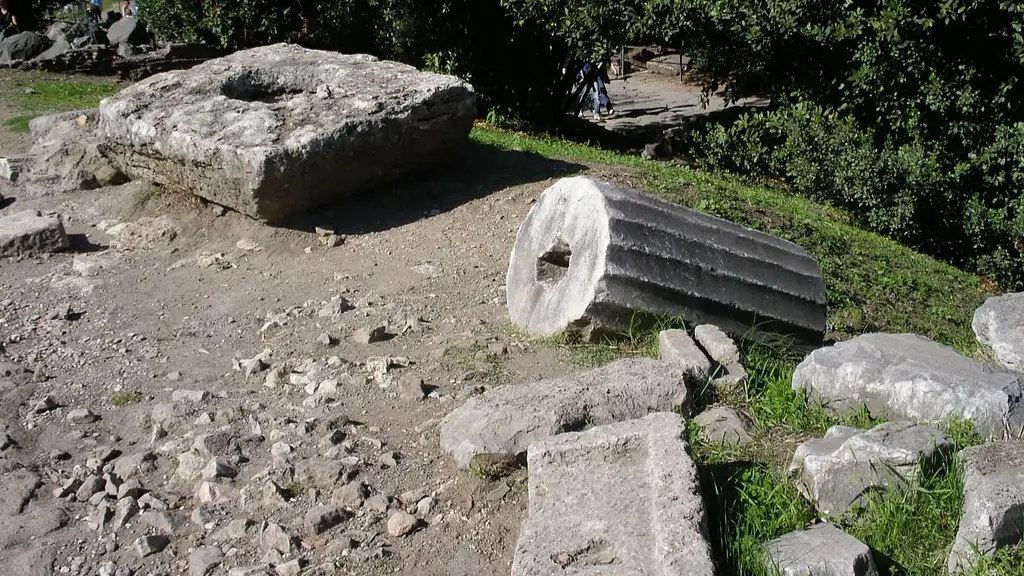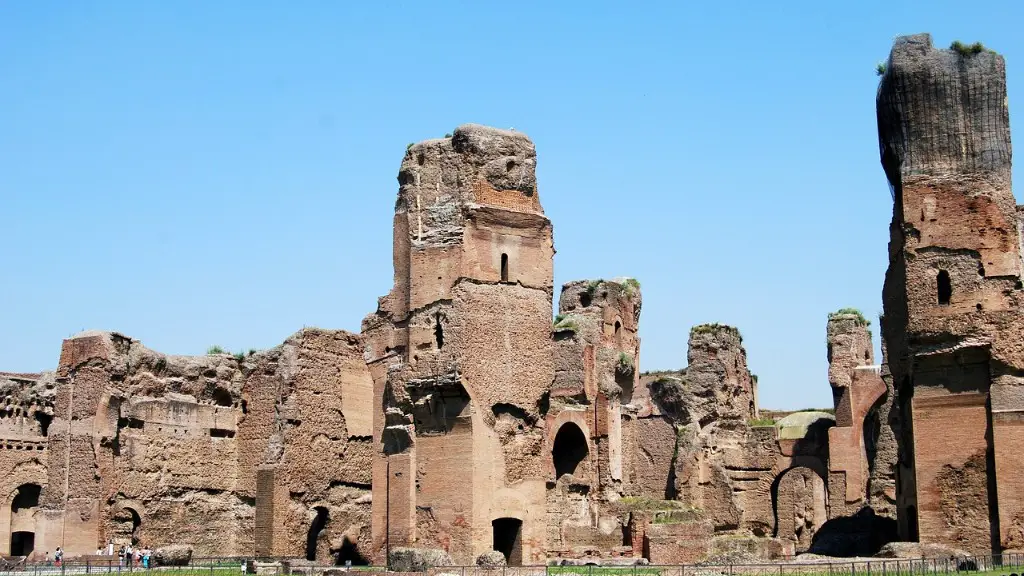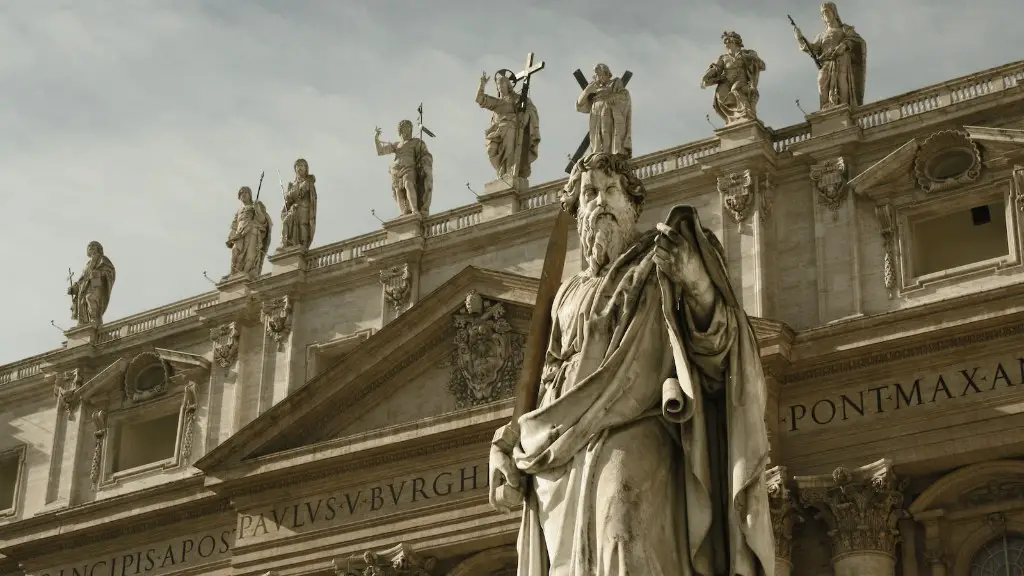When one thinks of ancient Rome, images of grandiose marble buildings and heroic conquerors often come to mind. However, the reality of life in Rome during the 4th century CE was far different from the popularized notions of the city. This was a time of great turmoil and transformation, as the once mighty empire was crumbling from within. A tour through Rome during this period would reveal a city in transition, with many of the old Roman traditions still clinging to survival.
A tour through ancient Rome in 320 CE would include a visit to the Colosseum, the Roman Forum, and the Pantheon.
Why was 320 AD chosen as the era for the animated tour of Rome?
In the video, Indiana University professor Bernard Frischer (who leads the Rome Reborn project) explains that they chose to use 320 AD for this visualization because it was “the peak of Rome’s urban development”. Ten years later, the emperor, Constantine, moved the capital to Constantinople (present-day Istanbul), and Rome began its decline.
Most travel in ancient Rome was by cart pulled by oxen, by walking, or by boat. Chariots were used for travel on the Roman roads when there was no need to carry a lot of weight. Chariots were sometimes used by the military.
What were the 3 biggest events in Roman history
753 BC is the traditional date for the foundation of Rome. According to legend, Romulus and Remus, the twin sons of Mars, the god of war, were suckled and cared for by a giant she-wolf at the site until they were grown. Romulus killed Remus and is said to have then founded Rome, naming it after himself. Rome is thought to have grown from a small city-state on the Tiber River known as Latium. The Etruscan civilization, which was the most powerful in the region at the time, had a strong influence on early Rome. The Etruscan kings ruled Rome from 616 to 509 BC. In 509 BC, the Romans overthrew the Etruscan monarchy and established the Roman Republic. The Republic was a constitutional government that gave power to the people. The Roman Republic lasted until the end of the Roman Empire in 476 AD.
338 BC was a significant year in the history of Rome. This was the year that the Romans settled the Latin War. The Latin War was fought between the Romans and the Latin League, a confederation of city-states in Latium. The war began when Rome attempted to expand its territory into the city of Latium.
Tourism in ancient Rome was quite limited due to a number of factors. First, it was quite expensive to travel, making it accessible only to the upper class. Second, travel was quite difficult and dangerous due to shipwrecks, storms, poor maps, and a lack of modern means of transport. Finally, the journey itself was quite long and time-consuming, making it impractical for most people.
What happened Rome 330 CE?
The fall of Rome is often attributed to a number of factors, including the death of Constantine the Great, the division of the empire into two parts, and the rise of barbarianism. However, the true cause of Rome’s fall is still a matter of debate among historians.
The ancient Greeks and Romans were not White in the same way that people are today. Contemporary racial categorizations are products of the modern era, and the concepts of “Whiteness” and “Blackness” did not exist in the same way in the past.
How did people travel in ancient times?
In the early days, people had no means of transport. Whenever they had to go somewhere they walked on feet. They used animals to carry their goods. It took a great deal to time.
Travelling within the core of the Empire could have been done in under a week, but travelling all the way to the fringes would have taken someone more than a month. This was due to the vast size of the Empire and the lack of efficient transportation at the time.
Why did people travel in ancient Rome
There are many reasons for travel, both in the past and present. In the past, most travel was done for purposes such as warfare, diplomacy, or trade. Today, people travel for many different reasons, including visiting religious sites, attending festivals and sporting events, and for health-related reasons. No matter the reason, travel can be a rewarding and enriching experience.
The ancient Romans were responsible for a lot of the infrastructure and amenities that we take for granted today. Here are 13 things they did for us:
1. Fast food: The Romans were the first to introduce street stalls and “food on the move” as we might think of it today.
2. Advertising and trademarks: The ancient Romans were responsible for the development of advertising and trademark law.
3. Plumbing and sanitation: The Romans were the first to develop modern plumbing and sanitation systems.
4. Towns: The Roman concept of the town as a self-governing unit served as the model for subsequent development of urban areas.
5. Architecture: The Romans were responsible for many innovations in architecture, including the development of the arch and vault.
6. Roads: The Romans built an extensive system of roads that were used for military, trade, and transportation purposes.
7. Our calendar: The Roman calendar was the precursor to the modern Gregorian calendar.
8. Engineering: Roman engineering achievements include the construction of roads, bridges, aqueducts, and parks.
9. Law: The Romans developed a comprehensive system of law that was the foundation for subsequent legal systems.
What are 5 facts about ancient Rome?
There are a few things that everyone should know about Rome! For starters, Rome was actually founded in 735 BC, though some believe it was founded by Romulus in 753 BC. Secondly, cats are free to roam the streets of Rome – so keep an eye out for some furry friends! Thirdly, the Roman’s eyes were bigger than their stomach, which often led to overeating. Fourth, men were only allowed to wear togas in public – no jeans or t-shirts! Fifth, women wore stolas, which were long, flowing gowns. Sixth, the coins in the Trevi Fountain are there for good luck – so make a wish! Finally, the Roman breathalyzer was invented by a man named Leonardo da Vinci! And last but not least, the Colosseum saw its fair share of casualties over the years.
1.One of the main reasons Rome fell was due to the invasions by Barbarian Tribes.
2.Economic troubles and overreliance on slave labor were also big factors in Rome’s decline.
3.The rise of the Eastern Empire in the late third century put even more pressure on Rome.
4.Overexpansion and military overspending led to even more problems for the already struggling empire.
5.Government corruption and political instability were also major contributors to Rome’s fall.
6.The arrival of the Huns and the migration of the Barbarian tribes added even more stress to an already unstable situation.
7.All of these factors combined led to the decline and eventual fall of the Roman Empire.
When did Rome start tourism
The Grand Tour was a popular 17th and 18th century practice among the upper echelons of society in which young men would travel around Europe, usually with a tutor, in order to expand their education and cultural awareness. Italy was a major stop on the Grand Tour circuit, and the Roman Empire was a major draw for many of the young men who undertook the journey. In recent years, tourism to Italy has exploded, with millions of people visiting the country every year. While the Roman Empire is no longer a central attraction, Italy still offers a wealth of history, culture, and natural beauty that continues to draw visitors from all over the world.
The oldest building standing in Rome is the temple of Hercules Victor and dates back to the second century BC. This temple is sometimes still referred to as the Temple of Vesta and the error is due to its circular shape which makes it similar to the Temple of Vesta in Tivoli.
When did tourism really begin?
Tourism is an important part of many people’s lives, and it has a long history. Marco Polo’s travels in the 13th century were some of the first recorded instances of tourism, and the British aristocracy’s “grand tour” of Europe in the 18th century was another early example. David Livingstone’s journeys through Africa in the 19th century were also a form of tourism, as he was often visited by curious Europeans who wanted to see firsthand the continent that was so exotic to them. Today, tourism is a vital part of many economies, and it shows no signs of slowing down.
First, in 330 CE, Constantine decided to help out Rome and moved the capital to Constantinople. Then, power in the empire was given to two emperors, one ruled Rome and one ruled Constantinople. In 410 CE, a German tribe attacked and stole Rome.
Warp Up
In 320 CE, a tour through ancient Rome would have begun at the Forum, the center of the city and site of many of its most important religious and political buildings. From there, the tour would have proceeded to the Palatine Hill, home of the city’s wealthy elites. A tour through Rome’s ancient monuments would have included the Colosseum, the largest amphitheater in the world; the Pantheon, a temple dedicated to all the gods; and the Circus Maximus, a popular entertainment venue. The tour would have ended with a view of the city from the top of the Viminal Hill.
It was fascinating to see how Rome had changed since the last time I was here. The city was bustling with life and there was a sense of excitement in the air. Despite the passage of time, Rome still feels like home.




